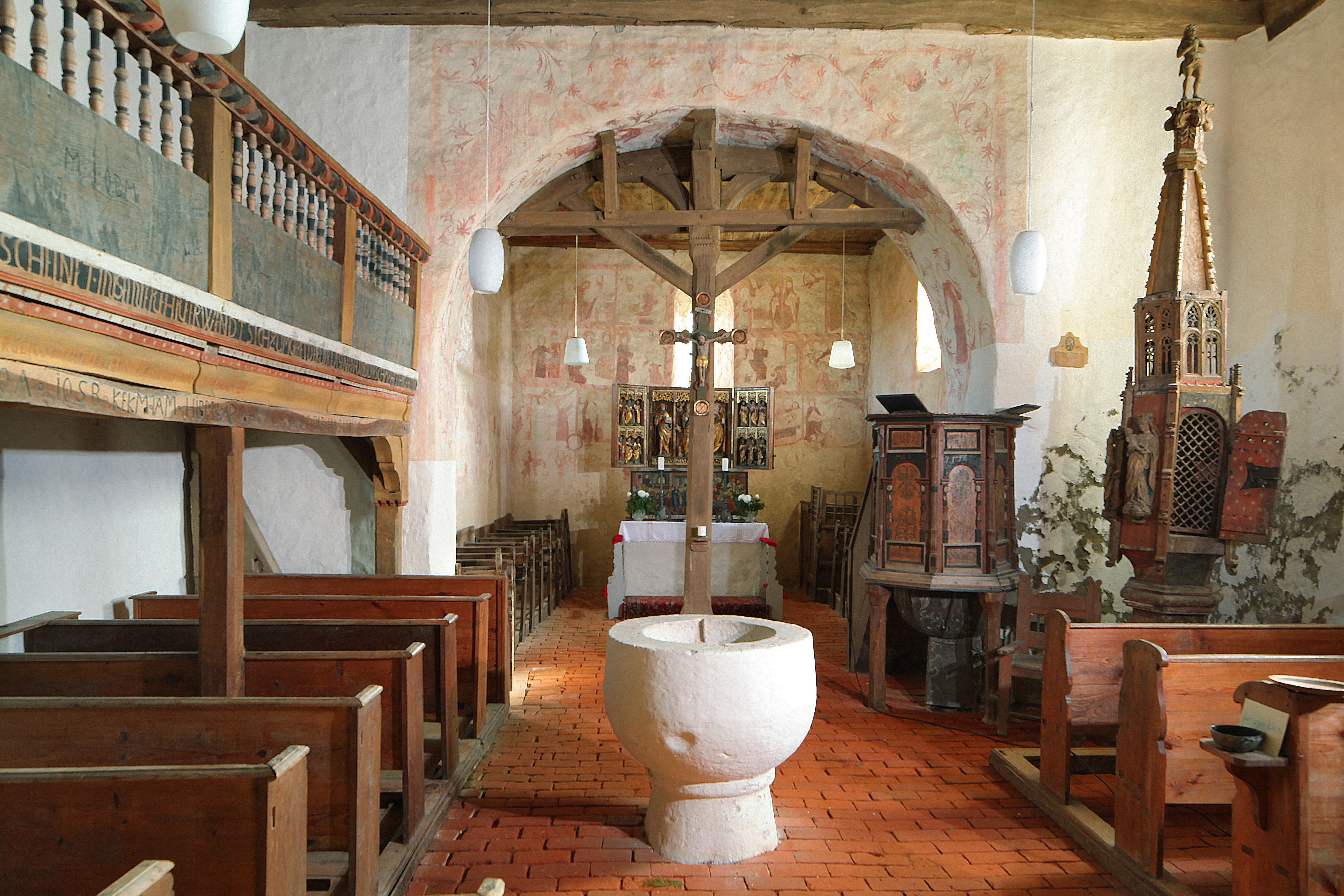
BACKGROUND
Can you tell us a bit about your background?
I live and work in Bergen, on the west coast of Norway. I am a professor at the University of Bergen, on the ‘Material Culture of Christianity’, and responsible for the collection of church art at the University Museum. I moved here in 2016 from my home country, the Netherlands. There, I worked at the University of Groningen from 2004 to 2015, at the Institute of Christian Cultural Heritage of the Faculty of Theology and Religious Studies. Groningen is also where I studied, not far from the town where I grew up, in the province of Drenthe.

Fig. 2: The University Museum of Bergen possesses a unique collection of medieval church art (photo author)
How did you become interested in religious heritage?
Old churches have fascinated me ever since my parents took my sister and me on cultural trips in the summer vacations during the 1980s. I guess the imposing architecture, the special atmosphere inside and the sense of history already spoke to me as a child. During my studies in theology and art history, I could develop this interest further, and I happily ended up making it my profession. One downside is that the boundary between work and hobby is sometimes somewhat blurred: it is simply impossible for me to walk past an old church without checking if the door is open, for example…
How did you get started with FRH?
I got involved in 2013, when I was still working in Groningen. Lilian Grootswagers had invited me to the FRH conference on movable religious heritage in Utrecht, and I held a talk entitled Church Interiors as “Cultural Time Capsules” – a Brief European Tour. It was great to meet people from all over the continent and exchange ideas about topics of mutual interest. Later, I became a member of the scientific advisory committee for the 2018 conference in Paris. There, it was decided that this should have a permanent character. This year, we have only been able to meet digitally, but I think we have been very efficient so far. Last year in April, I co-hosted an FRH Face-to-Face meeting here in Bergen, together with the Lutheran church.
INTERESTS AND FOCUS
Can you tell us a bit about what you currently do outside of FRH?
My work mainly consists of doing research. Part of it is connected to the fabulous collection of medieval church art at the University Museum, which is among the best in Europe. Most objects are of painted wood and many date back to the thirteenth and fourteenth centuries. They all stem from churches in Western Norway, but they are so rare in other countries now that our collection has a truly European significance. Surprisingly, the closest parallels are found in Catalonia, in the museums of Barcelona and Vic. Last year, we organized the exhibition North & South, which brought medieval art works from both countries together for the first time. It was shown first in Utrecht and then in Vic, and it was a special experience to see that religious art from places so far apart can still be so similar.

Fig. 3: The exhibition North & South on show at the Museu Episcopal in Vic, 2020 (photo author)
What are your activities/work/research focused on concerning religious heritage?
I like to approach medieval art from a comparative European perspective. All of the Latin West belonged to the same church that was led by the Pope in Rome, which means that medieval churches and their furnishings are basically the same from Finland to Portugal. The organization level of the church must have been extremely high, as it managed to create ‘branches’ in almost every town and village. Moreover, many of these buildings are quite spectacular monuments, and they are full of art. My current book project focuses on the remarkable wealth of medieval artworks that survived the Lutheran Reformation in Germany. Next year, I hope to be in Catalonia (Girona) to give guest lectures in the spring, and then occupy the Prado Chair at the Prado Museum in Madrid in the autumn. This will bring me back to the topic of my PhD thesis on medieval altarpieces in Spain.

Fig. 4: The now Lutheran village church of Audorf, in Saxony-Anhalt (Germany), has preserved most of its medieval furnishings (photo author)
PROTECTION OF RELIGIOUS HERITAGE
What do you think is the biggest threat to religious heritage and what do you think is the best way to combat it?
I think the biggest threat to religious heritage is the lack of interest. Now that fewer and fewer Europeans visit churches for religious services, we run the risk that they will not care about these monuments in the future. This may never happen, since religious heritage is our common legacy that defines us and explains who we are. Much of our history is reflected here, and this is why old churches have been called ‘memory machines’. Forgetting about religious heritage is therefore a form of cultural dementia. I see raising awareness of religious heritage and spreading knowledge about it as a core task of FRH, and this is also where I see my own role as a researcher. Far from locking myself in an academic ivory tower, I wish to bring research insights to the public, and also to keep doing as my parents already taught me when I was little: to venture out in the field and experience our fascinating history in Europe’s old churches.
Cover Photo: Justin Kroesen in front of the wooden church at Os, near Bergen, Norway (photo David Pineda)





Follow us: